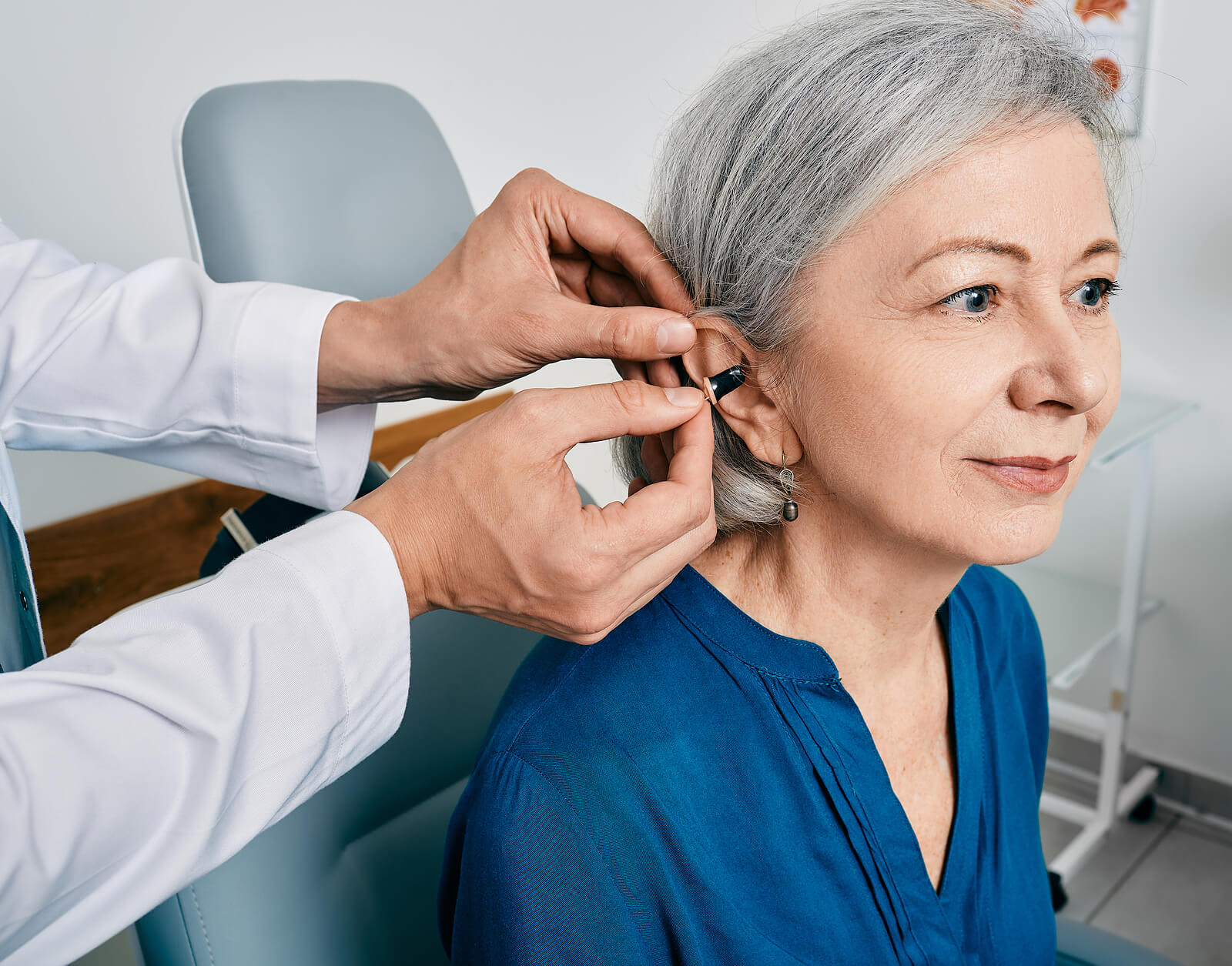What to Expect at a Hearing Test

Schedule Your Hearing Test Today!
If you experience any hearing loss symptoms or suspect you may need hearing aids, a hearing evaluation is the first step in the treatment process. Hearing evaluations are conducted by a hearing healthcare specialist who is trained to diagnose underlying hearing health issues. There are different types of hearing tests which are all noninvasive and painless. Approaching a hearing test, you may feel nervous or anxious. Acknowledging and addressing health issues can be overwhelming. But knowing what to expect from this process can help you feel prepared and ready for treatment!
1. Intake process
The hearing test process starts with an intake process that is similar to most medical appointments. You can expect to complete one page of paperwork about your health background and history. We’ll ask you questions about the symptoms you are experiencing, any family history of hearing issues, and lifestyle factors that can impact hearing health. This includes work environments, hobbies, social engagement, and other considerations that could affect hearing. This allows us to understand more of what you’ve been experiencing and to learn about anything that could be contributing to underlying hearing loss. This also allows us to discuss what you can expect from your hearing test as well as hearing loss treatment. We encourage you to invite a loved one to join you for the hearing test. A familiar voice is beneficial during the speech understanding test.
2. Ear inspection
Next, we will physically examine your ears to see if there are any obstructions contributing to hearing health issues. Using an otoscope, an instrument that shines a light into the ears, we will look at your ear canal and eardrum. We check for things like accumulated ear wax, any bone growths, issues with your eardrum (like a tare), etc. These issues can prevent sound waves from traveling through the ear canal to reach the inner ear where they are further processed. This is known as conductive hearing loss which is often temporary.
3. Hearing test
The goal of a hearing test is to measure your hearing capacities in both ears. There are a few types of hearing evaluations we may use to assess your hearing health. But one of the most common is known as pure tone audiometry testing. This test involves wearing headphones in a soundproof room while sounds at different volumes are played. You will be asked to indicate what you can hear by either raising your hand or pressing a button. This measures the softest sounds you can hear in both ears which identifies your hearing thresholds. We may also use another test that is similar to pure tone audiometry but rather than sounds, this test involves speech. This helps identify the types of speech that may be more challenging for you to hear and process.
4. Results
The results from your test will be captured on what is referred to as an audiogram. This chart will visually show the details of your hearing loss for each ear. This includes the degree of impairment as well as the types of sounds and speech that are more difficult for you to hear. We will take the time to thoroughly explain these results so that you fully understand the details of your hearing loss. We will also recommend treatment options that can best meet your hearing needs. Hearing aids are the most common treatment for hearing loss. Our experts will recommend devices that can be optimal for your hearing needs in everyday life.
5. Follow up
After your hearing results, the next step is identifying the best possible hearing solution. Depending on the type of hearing aid you choose, we may take a mold of your ear which is used to make specific types of hearing aids. Your follow-up appointment will be for your hearing aid fitting. You will receive your hearing aids during this appointment and we will check to make sure the fit is ideal and comfortable. We also program your device with specific settings to ensure your hearing needs are met. Our experts will run tests to make sure your hearing is being effectively supported and make any adjustments if necessary. During this appointment, you will also learn everything about your device. How to use, maintain, operate any features and technologies, insert and safely remove, etc.
